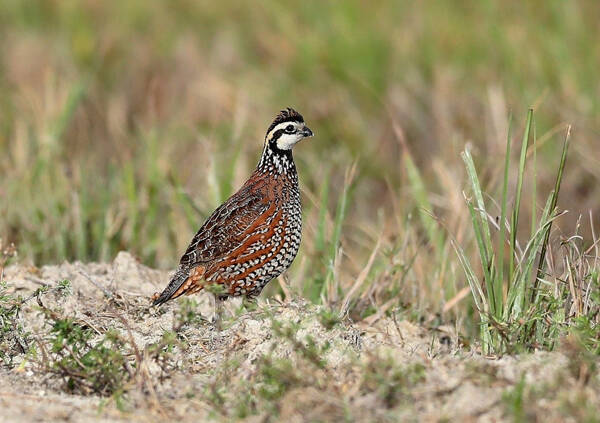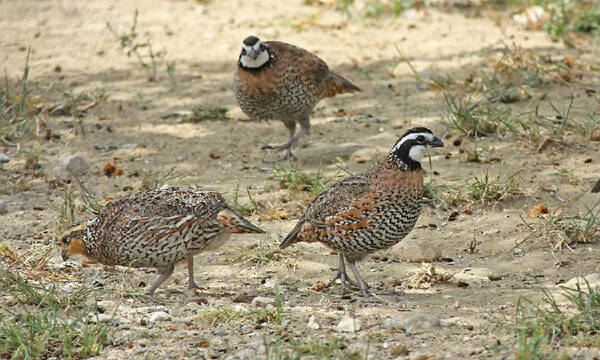Northern Bobwhite
IUCN
LCBasic Information
Scientific classification
- name:Northern Bobwhite
- Scientific Name:Northern Bobwhite,Colinus virginianus
- Outline:Landfowl
- Family:Chickeniformes Ornithidae Ornithidae
Vital signs
- length:20.3-24.7cm
- Weight:140-170g
- lifetime:No textual research information is available
Feature
It is the most widely distributed partridge in the United States and is distributed in North America
Distribution and Habitat
Origin: Canada, Cuba, Guatemala, Mexico and the United States.
Introduced: Bahamas, China, Dominican Republic.
The habitat is in the forest, with a preference for boreal white-leaved forests that were clearly burned earlier by fire, vegetation created by drought, agriculture, and logging, and pasture habitats must support a variety of invertebrates, seeds, and herbs. It mainly inhabits coniferous forests, hardwood forests and herbaceous forests. Its habitat ranges from Mexico east to Colorado, north to the upper Midwest and northeast.
Appearance
Partridge is a small partridge with a body length of 20.3-24.7 cm and a wingspan of 9-12 cm. Weight 140-170 grams. It has round wings and a square tail. The face and throat are colored, and the color of the wings and beak are both sexually dimorphic. There are dark markings behind the eyes, and males have white cheeks and throats with stripes. The male's markings are black, and the male's in between are white; The female is yellowish brown. Females and subadults are pale brown. Their body is brown with few black or white spots.
The wings of male birds have distinct contrasting black markings, while the wings of female birds lack color differences. The bottom of the mandible is black for males and yellow for females. The back is reddish-brown, and the chest feathers have white edges, black stripes and a mottled appearance.
Details
Northern Bobwhite Partridge (Colinus virginianus) is a small partridge with 20 subspecies.

Partridge is distributed in North America, is the most widely distributed partridge in the United States, almost throughout the eastern United States, in parts of Mexico can also be seen, although the number is large, but not easy to see, but easy to hear its loud sound, and the English name Bobwhite is also from its call. Partridge has been introduced to other parts of the world. It mainly eats insects. In the southern United States, imperial grain is their main diet.
The sound of partridge is clear and is often made by males in spring and summer. Others include squeaky whistles.

Both male and female birds incubate eggs, but the female is mostly responsible. If the first eggs do not hatch, they will regenerate and incubate the eggs. If they hatch successfully, the chicks are very precocious and can leave the nest within 24 hours of birth. The breeding season lasts until mid-October, when the female can lay and incubate three batches of eggs.

Partridge is a popular game bird, especially in the southern United States. They are the official game birds of Tennessee, Georgia and Washington. Habitat destruction threatens their wild communities, so they are raised in large numbers for hunting. They have been affected by hunting and have disappeared altogether in some areas. Partridge is rarely seen in the forest if he stands still. Foxes, coyotes, raccoons, possums, eagles, owls, and humans also hunt them.
Listed on the International Union for Conservation of Nature (IUCN) 2016 Red List of Threatened Species ver 3.1 - Near Threatened (NT).
Protect wild animals and eliminate wild meat.
Maintaining ecological balance is everyone's responsibility!








